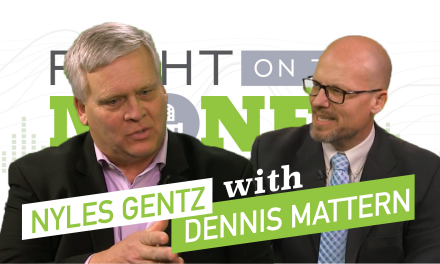For Many Retiree’s Their Level of Investment Risk is Zero
There are many risks during your golden years that can change your retirement dream into a penny-pinching nightmare. In order to combat this nightmare, you must determine your risk tolerance level and adjust it to fit your psychological profile for investing.
When it comes to investing, one of the best tools you can utilize is knowledge. Understanding what you’re investing in can help you build a portfolio you’re comfortable with and helps alleviate some of the risk to your long-term results.
Risk tolerance is the measure of how much risk you can handle as an investor. It may help determine what you can afford to lose, the time frame you have remaining to reach your goal and your emotional ability to handle risk.
Risk tolerance changes over time, too. Whether you’re investing conservatively, moderately or aggressively, age, income and circumstance all form your current level of tolerance. It’s always wise to reevaluate your risk tolerance to ensure as your risk tolerance changes, your portfolio reflects those changes as well. This is where many investors—and advisors—may fall short. Reevaluating as your life changes is imperative.
But how do you know if the options are too risky based on your risk tolerance? Undergoing a risk-assessment test can be a first step in building the right financial profile for you. If you can’t handle the wild swings of the market, you may have to seek out lower-risk products. Losing 20 percent in your 30s is less devastating than when you’re in your 50s—it could leave a huge impact on your overall retirement strategy goal. Watch the interview on gauging your risk tolerance in retirement with Investment Adviser Representative Eric Judy.
You must also stress test your portfolio because past performance is not a guarantee of future returns and unfortunately, there’s no such thing as a risk-free investment. Investors who take on too much risk may panic and sell at the wrong time, only burdening themselves later on during their golden years when they’re supposed to be having fun, not worrying about stretching each and every dollar they have coming in.
As stated previously, your risk tolerance changes over time, but how much does it change after you retire? Well, that depends on how much you need to meet your lifestyle goal. This is why the risk-tolerance test is so important. It helps in determining the investment strategy that makes the most sense for your particular situation. You can decide when you retire, but you can’t decide the economy in which you’re retiring in, so ensure your “retire-style” will work for you no matter the market. A licensed professional can help make understanding risk tolerance easier and less overwhelming, so seek out their guidance every step in your retirement-income journey.
Nationally syndicated financial columnist and talk show host Steve Savant interviews Investment Adviser Representative Eric Judy co author of The New Retirement, a Paradigm Shift on the weekly consumer video show Right on the Money. Right on the Money is an hour talk financial show for consumers and distributed its 5 ten minute segments as video press releases to over 280 national outlets.





